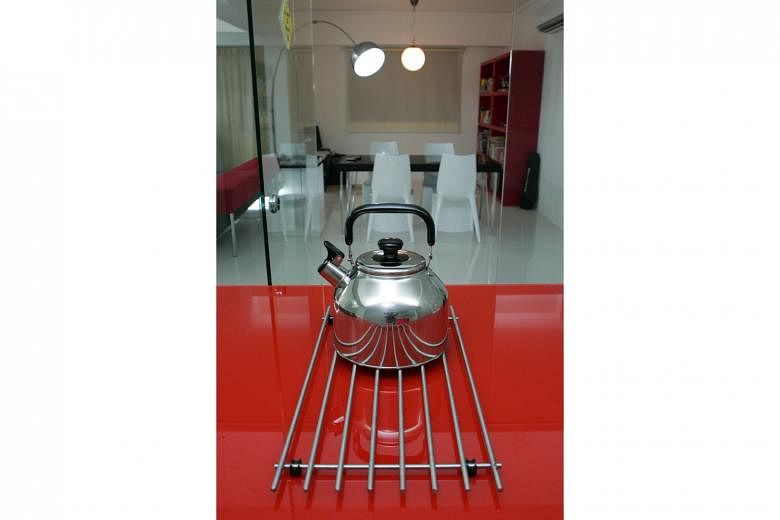NEW YORK • The countertop is a basic element of the kitchen, but it causes much consternation.
It is flat. Its job is simple: to provide a clean, even surface for food preparation and serving.
Really, how difficult could it be to choose the right one? Fairly difficult, as it turns out.
"The starting point is to understand how the space will be used," said Mr Andrew Kotchen, a founding principal of Workshop/APD, a New York firm that has designed many kitchens for homes.
"We have clients who are chefs and we have clients who make only coffee in their kitchens."
To sort through the options, he and other designers and material suppliers offer some tips. Understand your materials: Counters can be made from a variety of materials and there are advantages and disadvantages to all of them.
Among the most popular are natural marble and engineered stone such as Caesarstone and Silestone.
"Everyone loves marble and the aesthetic of marble is what everyone's chasing" with man-made products, said Mr Jonathan Tibett, an owner of ABC Stone in New York.
"Although marble offers an incredible aesthetic, there are some vulnerabilities."
Specifically, "marble is calcium carbonate, and acids eat that calcium carbonate, which creates etching", he added, referring to the whitish haze left behind by things like lemon juice and tomatoes.
Marble is also relatively easy to scratch. Engineered stone does not react to acids and is more resistant to scratching.
Consider natural alternatives to marble: If you love the look of marble, but are worried about etching, you might consider other kinds of natural stone, such as quartzite.
Some varieties have "patterning that is similar to marble", Mr Tibett said, but are "resistant to acids and scratching".
If you prefer natural stone with a darker colour, take a look at granite or soapstone, said Mr Evan Nussbaum, a vice-president at Stone Source, a material supplier.
He advises against using black marble - "the acid etching is going to be way too visible, because etching is light in colour".
With granite and soapstone, etching is not a concern.
Look at other options: Strong, impervious man-made materials - including large-scale porcelain slabs and sintered stone like Lapitec, Neolith and Dekton - are gaining favour as an alternative to quartz-based engineered stone.
Hard-wearing, solid-surface materials such as Corian remain popular and can be used to create a countertop with a seamless look.
Stainless steel and wood are also favourites with designers, though both tend to show wear over time.
Mix and match: There is no rule that says you must use a single material for all your counters.
Architects and designers often mix it up by using one material for the majority of the counters, a different material for the island and yet another for the backsplash.
"Very often, we pick a nice-looking stone for the kitchen island because that's where people will sit and touch the marble," architect West Chin said.
"Then, on the back counter, where we have the sink, dishwasher, stove-top, more grease and dirty dishes, we choose a more durable material."
Plan the details: After choosing the material, all you need to worry about are design and installation.
At the very least, you will need to select a sink, faucet and any integrated appliances before the counter is fabricated, so it can be cut to accommodate them.
Consider a sealer: In general, "we recommend a sealer on all-natural stone", said Mr Nussbaum. "Even on high-density materials" like granite and quartzite.
Man-made materials - including engineered stone, sintered stone, porcelain and solid surface - do not require a sealer because they are already virtually non-porous.
Some companies offer products that coat stone to protect against staining as well as etching.
But "the thing about sealers that sit on the surface is that you have to spend a lot of time maintaining that sealer", Mr Nussbaum said.
"In my experience, there's no way to stop a marble from etching without creating other maintenance concerns. In many cases, it might be easier just to maintain the stone."
Or you could just allow the marble to show its age.
NYTIMES

